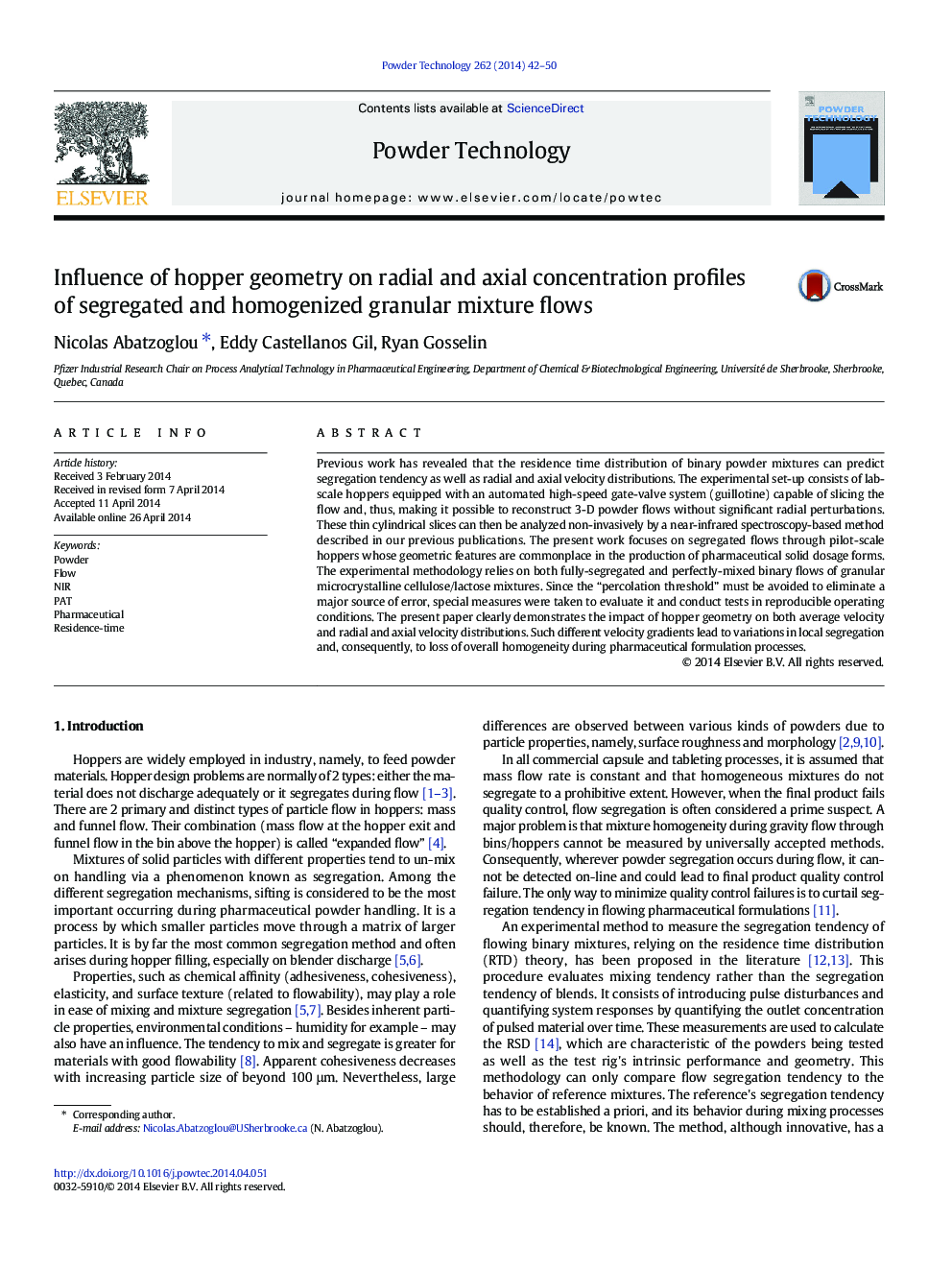| Article ID | Journal | Published Year | Pages | File Type |
|---|---|---|---|---|
| 236151 | Powder Technology | 2014 | 9 Pages |
•A NIRS method for evaluating velocity & concentration profiles in powder flows.•Hopper geometry influences radial and axial velocity vectors.•Cylindro-conical hopper shows a rather symmetric and steep radial velocity profile.•Conical hopper gives considerably lower residence times than asymmetric one.•Hoppers tested show velocity profiles significantly different from ideal plug flow.
Previous work has revealed that the residence time distribution of binary powder mixtures can predict segregation tendency as well as radial and axial velocity distributions. The experimental set-up consists of lab-scale hoppers equipped with an automated high-speed gate-valve system (guillotine) capable of slicing the flow and, thus, making it possible to reconstruct 3-D powder flows without significant radial perturbations. These thin cylindrical slices can then be analyzed non-invasively by a near-infrared spectroscopy-based method described in our previous publications. The present work focuses on segregated flows through pilot-scale hoppers whose geometric features are commonplace in the production of pharmaceutical solid dosage forms. The experimental methodology relies on both fully-segregated and perfectly-mixed binary flows of granular microcrystalline cellulose/lactose mixtures. Since the “percolation threshold” must be avoided to eliminate a major source of error, special measures were taken to evaluate it and conduct tests in reproducible operating conditions. The present paper clearly demonstrates the impact of hopper geometry on both average velocity and radial and axial velocity distributions. Such different velocity gradients lead to variations in local segregation and, consequently, to loss of overall homogeneity during pharmaceutical formulation processes.
Graphical abstractFigure optionsDownload full-size imageDownload as PowerPoint slide
